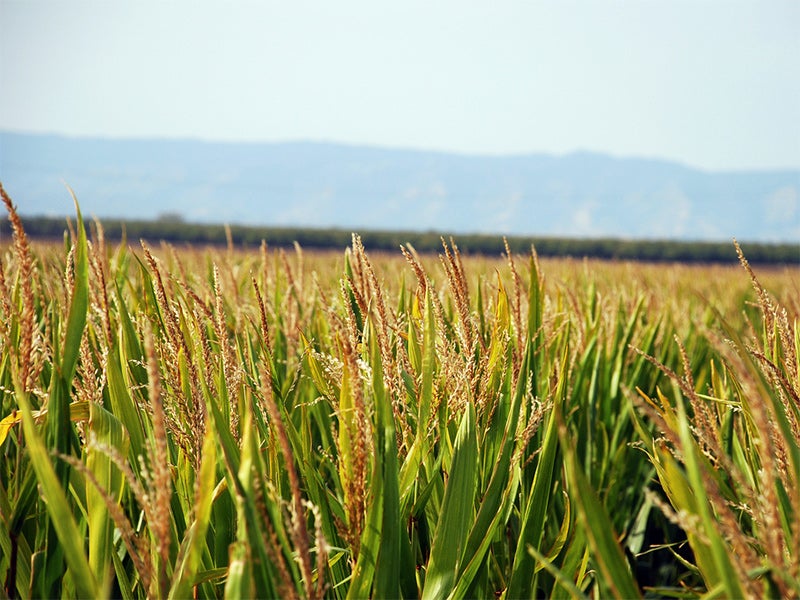Biofuels: Why Growing Food for Fuel is a Foolish Choice
Studies show that an increase in biofuels produced from food crops is more reckless than renewable.
As more and more people begin to accept the dire reality of the climate crisis, calls to increase reliance on biofuels over fossil fuels are growing. However, biofuels are often not the climate-smart or environmentally friendly solution they appear to be at first blush. Rather, meeting the increasing demand for today’s biofuels requires transforming biodiverse uncultivated areas into farmed land with multiple and substantial immediate and long-term adverse climate and environmental impacts.
Immediately, by turning over the soil and converting previously uncultivated land, producers release generations of stored carbon into the atmosphere. Preparing land for cultivation has substantial upfront impacts, as the process of agrification eliminates trees, unearths grasslands, and tills deep into the soil. Uncultivated areas maintain a legacy of carbon stored in the roots and bodies of native plants and deep within the soil. Therefore, converting the land to produce biofuel sources such as corn and soy releases considerable carbon into the atmosphere. For example, between 2008 and 2012, the conversion of land to grow crops for biofuel released an estimated equivalent of the annual carbon dioxide emissions of 34 coal-fired power plants or 28 million cars. In addition to releasing the stored carbon into the atmosphere, converting land also immediately changes the landscape so that it can no longer sequester and store new carbon. In a warming world where we need every tool at our disposal to tackle the climate crisis, we cannot afford to lose natural mechanisms for carbon sequestration.
While not all land used to produce crops for biofuels is newly converted, even displacing other crops for biofuels can have similar consequences. Food or animal feed that has been previously grown on land now used for biofuel feedstock will – absent a change in demand – have to be grown somewhere else, and that somewhere else often involves land conversion.
In addition to the climate harm caused by biofuel production, the massive production of corn destroys native habitats and poses a significant threat to biodiversity. Land conversion often occurs in ecologically sensitive areas, leading to habitat loss and harming wildlife. Preparing and maintaining the biofuel’s renewable biomass production injures both land-based and aquatic habitats. Experts recognize that the production of biofuels is harming the habitats of numerous animals and fish—including those of listed and endangered species. And recently, the U.S. Court of Appeals for the District of Columbia held – in a case litigated by Earthjustice – that the production of renewable biomass to satisfy the renewable fuel standard poses a real danger to threatened and endangered species.
Over time, the climate and environmental impacts of converting land to produce crops used for biofuels compound. Converted land often remains agricultural and thus unable to sequester and store carbon, while crop production (especially corn) demands unsustainable amounts of synthetic fertilizer. The immediate environmental consequences of biofuel production increase as altered land hardly regains its original ability to store carbon. In 2017, close to 30 million acres of corn were grown in the United States as feedstock for ethanol. As long as this land remains in production, the climate and environmental harm continue.
The production of crops for biofuels also removes the naturally occurring nutrients in the soil, increasing reliance on heavy nitrogen fertilizer. Crops do not retain much of the fertilizer that is applied and absorb only 40% to 50% of the fertilizer used. After heavy rains, the excess fertilizer runs off the land and contaminates the groundwater and local streams. Some excess fertilizer is converted into nitrous oxide (N2O) by microbial action. N2O is a potent greenhouse gas when released into the air. Nitrous oxide is almost 300 times more concentrated than CO2 in terms of the heat it traps in the atmosphere.
In addition to increased reliance on fertilizer, growing crops for biofuel production at the scale needed requires substantial pesticide use. The chemicals in pesticides affect various critical habitats and have led to toxic algal blooms across the nation, threatening ecosystems with endangered species like the Gulf of Mexico.
The goal of the renewable fuel program was to reduce the threat of climate change and the environmental harm caused by the combustion of fossil fuels. Unfortunately, the program’s reality has fallen short of these goals instead of leading to the conversion of previously uncultivated land to grow corn for ethanol and releasing tremendous amounts of greenhouse gases while harming critical habitats and species. While a shift off fossil fuels will be crucial in tackling the climate crisis, the transition cannot lead to additional climate and environmental harm. Considering both the immediate impacts and long-term damage caused by the production of corn for ethanol, increasing reliance on this biofuel does not provide a beneficial solution. The costs to the climate and the environment are far too significant.
Based in Washington, D.C., Carrie is the deputy managing attorney of the Sustainable Food & Farming Program.
Matt Ellis-Ramirez was a policy and communications extern in Earthjustice's Sustainable Food and Farming program.
Earthjustice’s Sustainable Food and Farming program aims to make our nation’s food system safer and more climate friendly.

